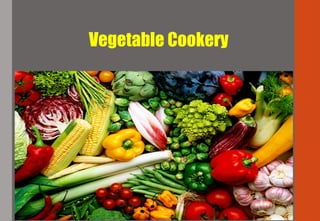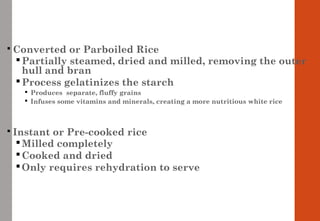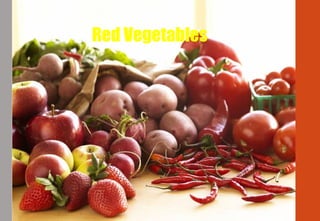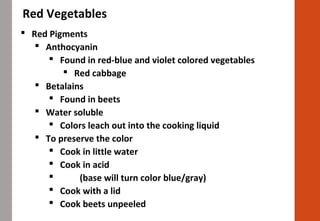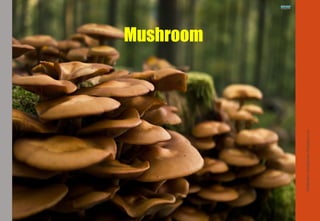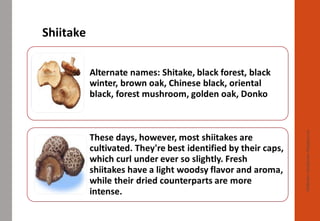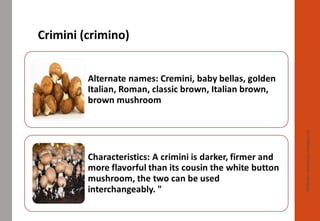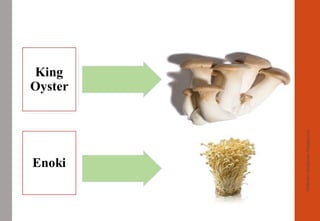This document provides information on various topics related to vegetable cookery, including different types of rice and their applications; methods for cooking pilaf rice and risotto; potato varieties and cooking methods; grains, legumes, and pulses along with appropriate cooking techniques; classifications and cooking methods for different colored vegetables; and various mushroom varieties. The learning objectives are to differentiate between varieties of ingredients and understand appropriate preparation and cooking techniques.
